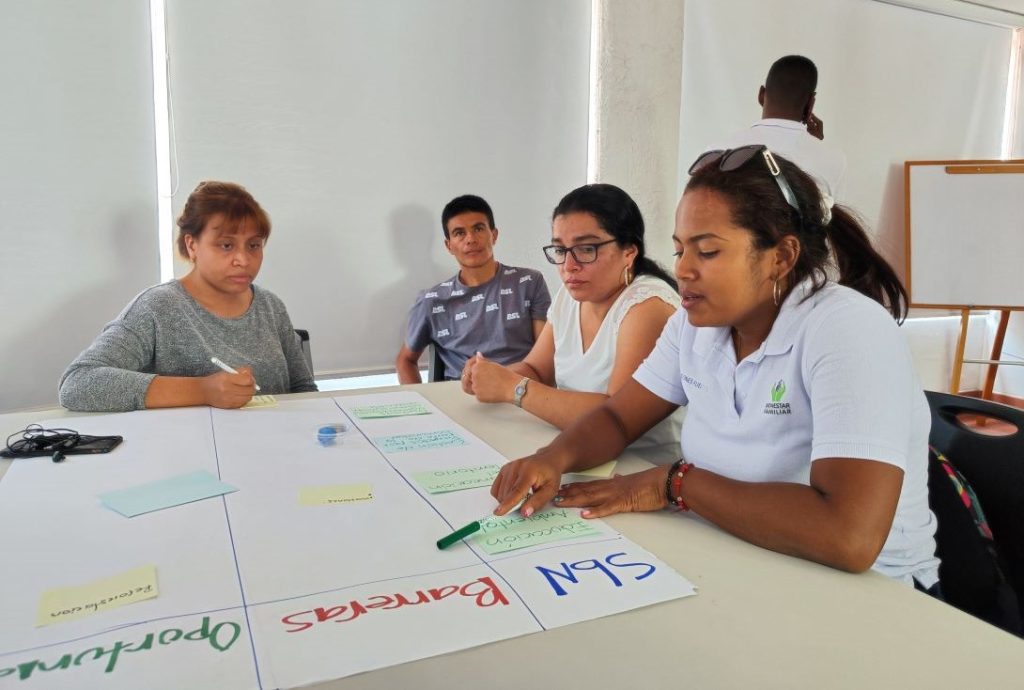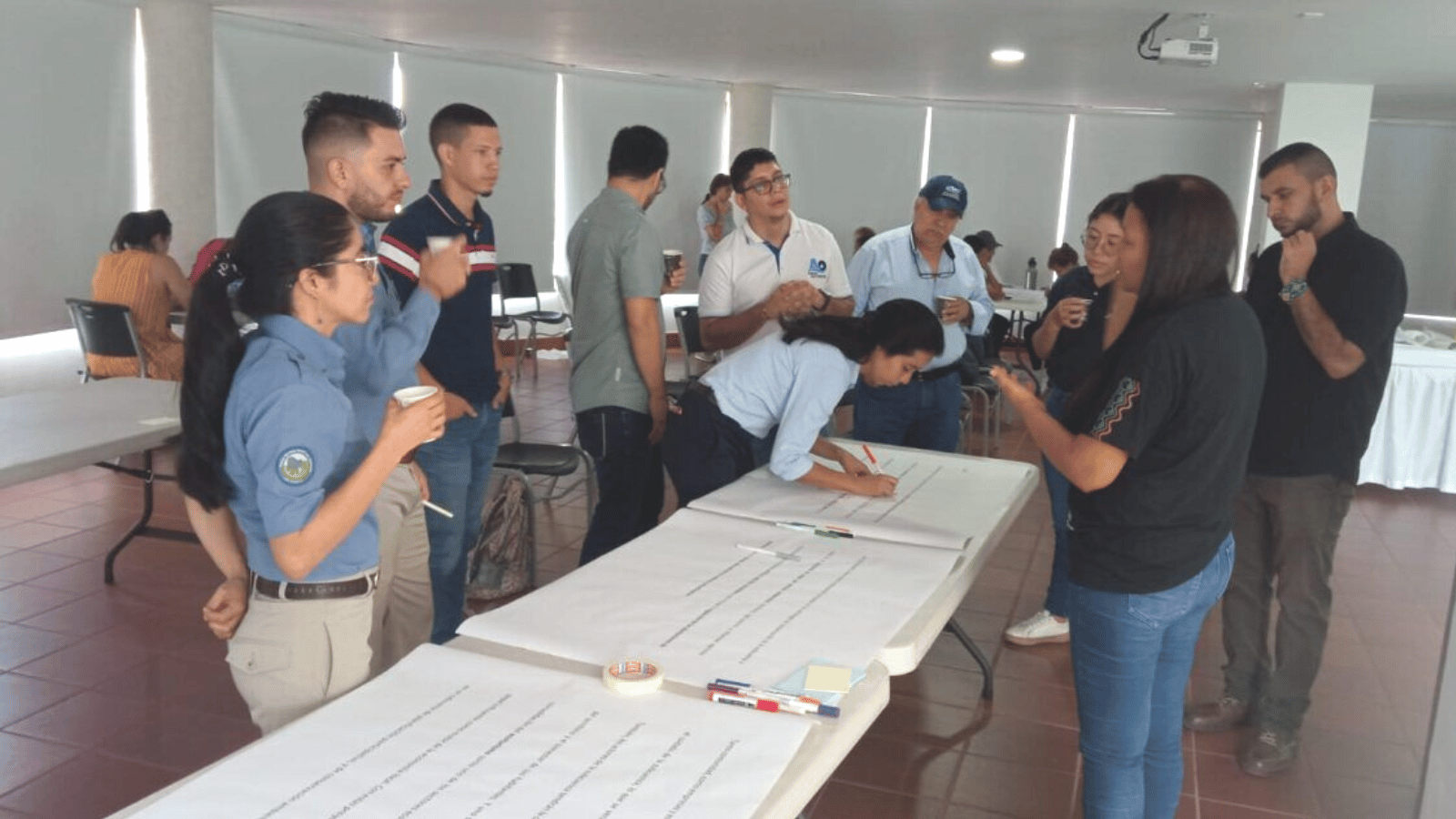On October 18, 2023, more than 20 stakeholders representing the local municipality, public administration, natural resource managers, environmental organisations, citizens’ organisations and the private sector joined the 3rd REXUS workshop, organised by Nima river watershed pilot leader, CIAT.

During the 3rd REXUS workshop stakeholders were updated on the outcomes of the two previous workshops and provided input on REXUS’s key findings for the Nima sub-basin.
The workshop followed up on the work carried out in two previous workshops and preparatory interviews with key stakeholders. In these previous phases, the key challenges facing the Nima river watershed had been outlined by a diverse group of stakeholders, representing different Water-Energy-Food-Ecosystems Nexus perspectives. The Nima river sub-basin is blessed with valuable ecosystems, including upstream paramo and Andean ecosystems with rich biodiversity, however squaring competing demands with safeguarding sustainability is proving a difficult puzzle. For example, lack of proper sewerage was previously identified by stakeholders as a significant risk upstream in the Nima river, where waste is discharged untreated into the river, endangering the water supply of rural aqueducts managed by local communities. Furthermore, local industry, such as pine plantations for paper production and sugar cane plantations provide employment opportunities for some people, but also place a strain on water resources. The 2nd REXUS Nima workshop established the elements of a vision of sustainability, and introduced an exploration of Nature-based Solutions as a means of addressing key challenges while providing important co-benefits.
The first part of the 3rd workshop focused on validating the findings of the Participatory Systematic Modelling (PSDM) for Nima sub-basin. A simplified version of the complex analysis undertaken under REXUS Work Package 5 was presented to stakeholders and they were invited to add and/or modify interactions between the key factors. These included the effects of a ‘rise’ or ‘fall’ in: effective land management planning; the spread of sustainable agricultural practices; the installation of Payment for Ecosystem Services, and effective management of polluting residuals, among others. An interesting clarification made by stakeholders concerned the scientific vocabulary used; they proposed to group together variables like “state of the river,” “riverbank conservation,” and “water quality”, since in the case of Nima these could be helpfully simplified to “river conservation state.”

Split in two groups, stakeholders thoroughly examined the Participatory Systematic Model Diagram prepared for the Nima sub-basin and made specific recommendations. Characteristically, they suggested that technical terms such as “Restoration actions” and “ecosystem conservation” should be grouped into “ecosystem conservation“ so that stakeholders fully understand their meaning.
The workshop then moved on to validate a 10-year vision of sustainability for the Nima river sub-basin. Stakeholders were divided into two groups, the first consisting of public and private sector representatives, and the second of organised community representatives, and were invited to comment in turns on a vision succinctly stated in three paragraphs, based on the outcomes of the previous workshops. The stated vision focused on safeguarding environmental sustainability, envisaged an active role of communities in installing measures like Payment for Ecosystem Services and sustainable agricultural practices and highlighted the cooperation of the public, private sector and communities, based on a foundation of heightened environmental awareness, to actively manage the area in a way that can combine economic and environmental sustainability, such as through ecotourism activities.
Finally, in the third part the workshop moved on a “reality check” on the practicality of implementing Nature-based Solutions that had been identified in the 2nd workshop. Participants were again divided into groups and invited to identify barriers and opportunities in NbS implementation. Barriers such as high costs for implementing some solutions and lack of awareness about the regulations governing the implementation of solutions were highlighted, but participants also stressed important opportunities, such as a greater awareness of climate change impacts increasing the willingness to implement NbS, as well as the complementarity of NbS with ecotourism in the area.

High costs for implementing specific solutions and lack of awareness of regulations governing the implementation of solutions were two of the barriers identified by stakeholders while improvement of the population’s income, reduction of deforestation and increased presence and support from public institutions and environmental authorities for the communities were the three key opportunities that they highlighted during an exercise that focused on the implementation of Nature based Solutions in the pilot.
REXUS is continuing its efforts to support the sustainable management of the Nima river sub-basin, aiming to support the development of an action plan for the Nima sub basin laying out tangible actions and roles and responsibilities for carrying them out.
Watch the video created by the Municipality of Palmira that highlights how the REXUS project is helping them address the Nexus challenges that the Nima basin is facing.

